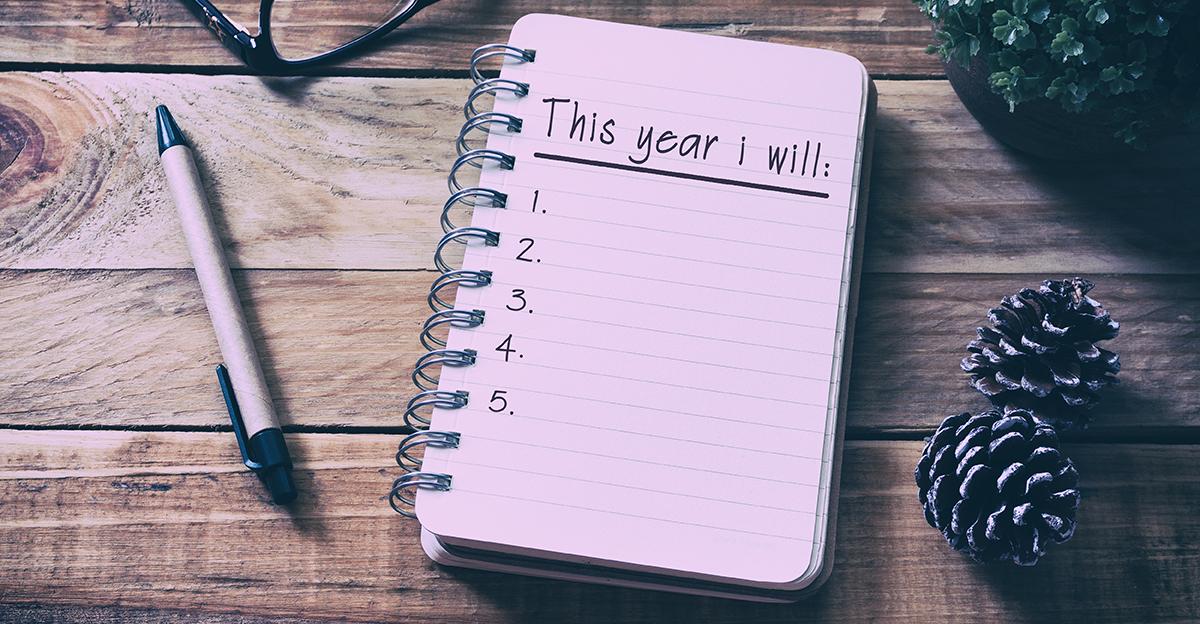Motivation is the general desire or willingness to do something. It’s the drive and determination, or the how, to get something done. But motivation also includes the reasons you have for getting something done. It includes the incentive or stimulus, or the why, that you want to do something. New Year’s Day is a popular time to set new goals, so let’s take a look at how you can follow through on your New Year’s resolutions.
6 Steps to Achieving New Year’s Goals
At the start of the new year, take an honest assessment of where you’re at with your health and wellness. It doesn’t really matter what it is you want to work on, as the process is much the same. Whether you want to eat healthier, be more physically active, save more for retirement, live more simply, or be a better friend, spouse, parent, child, etc., the steps are fairly similar. Here we’ll use a hypothetical physical activity and fitness goal to give more specific examples.
Take a Baseline Measurement
Take a baseline measurement to objectively assess where you are right now. For fitness, you may want to use one or more of the following that are appropriate for you. There is no one-size-fits-all measurement. Note: Always be sure you are healthy enough to perform these activities by consulting your physician first!
These include, but are in no way limited to, aerobic capacity tests such as the Pacer Test, 9-minute Run, or an informal test by doing your favorite type of cardio for 10 minutes and measuring your distance. Measure muscular strength and endurance with simple exercises like push-ups or curl-ups. Flexibility measurements include the sit and reach, or triceps stretch. And body composition tests measure your skin folds or Body Mass Index (BMI). These measurement suggestions cover the 5 components of health-related fitness.
Shop Health & Fitness Assessment Tools
Set Your Goals
Once you’ve put some objective numbers on your fitness, think about which areas you want to focus on. Is your endurance good, but your strength is not? Are your muscles tight and need more flexibility? Whichever area needs the most improvement is where you want to focus your attention.
What are you trying to accomplish? Be specific. Be sure that it can be measured. For example, “running more” is not specific enough. You want to set a SMART goal: Specific, Measurable, Achievable, Results-Focused, and Time-bound. An example might be: “By June 1st, I will be able to run 10K in under 1 hour on a flat course.”
Make a Reasons Why List
List all the reasons you want to achieve this goal. What are your incentives? This is the why of your goal. If, for example, losing weight is your goal, you may list things like lower risk of diabetes, heart disease, some cancers, it will be better on my joints, it will be easier to move, I may live longer, I can fit into my clothes better, I’ll look better, etc. Whatever your goal, list your motivations. Visualize yourself succeeding. Cut out positive images from magazines or on the internet and create a collage to look at when you are working through challenges. Print out encouraging quotes and post them around your house.
Create an Action Plan
An action plan consists of short-term objectives that work toward your end goal. They may be monthly, weekly, or daily. Be sure these are specific and measurable so you can tell if they’ve been achieved. Once a short-term objective is reached, write your next one. The road to your ultimate goal is paved with the baby steps of short-term objectives.
Know that setbacks will happen. You may backslide, get an injury, or have to travel. Don’t let this stop your journey! These happen to everyone. It does not mean you have failed. Remember, if you never fail, it means that you have never pushed yourself to accomplish something great. Learn from your setbacks. Keep a journal and write down lessons learned along the way.
Set Up Your Support System
Who will be your support system on this journey? Surround yourself with these people. Find positive, encouraging people who you can call when you need motivation. Have a list of folks you can be active with and schedule activities with them throughout the week. A workout buddy not only ensures you work out but makes it much more fun!
Join a group or team that keeps physical activity a priority, such as hiking or walking groups, swim teams, cycling clubs, or group fitness classes at the gym. There is no reason to do this alone. You will be much more successful with support.
Make It a Habit
Make these new behaviors a habit. It takes at least 21 days of repeated behavior to form a habit. Reaching fitness and wellness goals and continued maintenance of fitness levels are the result of forming healthful habits that last your lifetime, not just until your goal has been achieved. Start with making a list of your good habits. Examples might be:
- I walk my dog every day.
- I floss my teeth daily.
- I eat whole-grain bread.
- I say please and thank you.
Now think of some things you can change for the better to help achieve your goal. Write a list of these, too. Try a new one every month. Examples of health goals might include:
- Replace junk food with healthy snacks.
- Eat at home instead of going out.
- Take a walk after dinner each night instead of watching TV.
- Drink water rather than soda.
- Work out in the morning instead of sleeping in.
Change is difficult, but when it comes to achieving goals, it can be life-changing in a very positive way. Don’t be afraid of failure; it’s going to happen. In the words of author Paulo Coelho, “The secret of life is to fall seven times and to get up eight times.”
Read More: 4 Great New Year’s Resolution Activities for Your Students
So don’t let the fear of failure hold you back. Learn from your mistakes and keep reaching toward your next success. What are you waiting for? Get going!






Leave a Reply